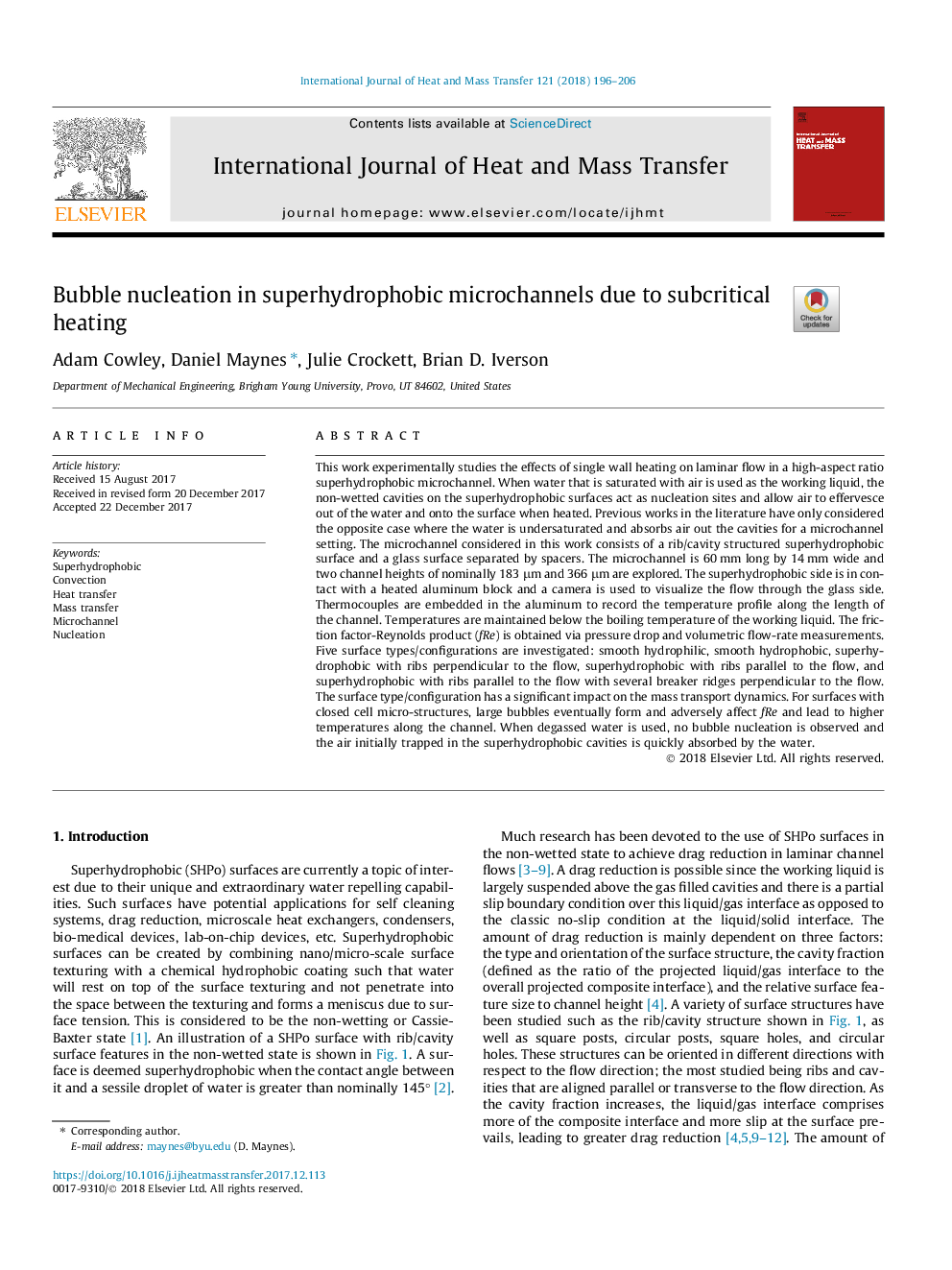| کد مقاله | کد نشریه | سال انتشار | مقاله انگلیسی | نسخه تمام متن |
|---|---|---|---|---|
| 7054446 | 1458019 | 2018 | 11 صفحه PDF | دانلود رایگان |
عنوان انگلیسی مقاله ISI
Bubble nucleation in superhydrophobic microchannels due to subcritical heating
ترجمه فارسی عنوان
هسته شدن حباب در میکرو کانالهای سوپر هیدروفوب به علت گرمای بیش از حد کریستالی
دانلود مقاله + سفارش ترجمه
دانلود مقاله ISI انگلیسی
رایگان برای ایرانیان
کلمات کلیدی
موضوعات مرتبط
مهندسی و علوم پایه
مهندسی شیمی
جریان سیال و فرایندهای انتقال
چکیده انگلیسی
This work experimentally studies the effects of single wall heating on laminar flow in a high-aspect ratio superhydrophobic microchannel. When water that is saturated with air is used as the working liquid, the non-wetted cavities on the superhydrophobic surfaces act as nucleation sites and allow air to effervesce out of the water and onto the surface when heated. Previous works in the literature have only considered the opposite case where the water is undersaturated and absorbs air out the cavities for a microchannel setting. The microchannel considered in this work consists of a rib/cavity structured superhydrophobic surface and a glass surface separated by spacers. The microchannel is 60â¯mm long by 14â¯mm wide and two channel heights of nominally 183â¯Î¼m and 366â¯Î¼m are explored. The superhydrophobic side is in contact with a heated aluminum block and a camera is used to visualize the flow through the glass side. Thermocouples are embedded in the aluminum to record the temperature profile along the length of the channel. Temperatures are maintained below the boiling temperature of the working liquid. The friction factor-Reynolds product (fRe) is obtained via pressure drop and volumetric flow-rate measurements. Five surface types/configurations are investigated: smooth hydrophilic, smooth hydrophobic, superhydrophobic with ribs perpendicular to the flow, superhydrophobic with ribs parallel to the flow, and superhydrophobic with ribs parallel to the flow with several breaker ridges perpendicular to the flow. The surface type/configuration has a significant impact on the mass transport dynamics. For surfaces with closed cell micro-structures, large bubbles eventually form and adversely affect fRe and lead to higher temperatures along the channel. When degassed water is used, no bubble nucleation is observed and the air initially trapped in the superhydrophobic cavities is quickly absorbed by the water.
ناشر
Database: Elsevier - ScienceDirect (ساینس دایرکت)
Journal: International Journal of Heat and Mass Transfer - Volume 121, June 2018, Pages 196-206
Journal: International Journal of Heat and Mass Transfer - Volume 121, June 2018, Pages 196-206
نویسندگان
Adam Cowley, Daniel Maynes, Julie Crockett, Brian D. Iverson,
